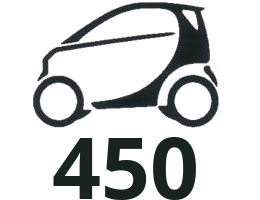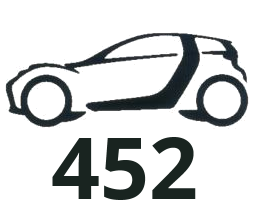Mod Description
The smart runs a 3.8 bar fuel pressure regulator, the injectors can handle more so lets up it a touch and see what happens by adding a Bosch 0280 160 575 4 bar FPR. Bought to our attention in August of 2006 by Christos Kolovos (CKA) on the Maniacs forum.Mod Details
PremiumNo Difficulty



 Mod ID300
CreditCKA / Evilution
Cost£ï¿½45
For
Mod ID300
CreditCKA / Evilution
Cost£ï¿½45
For
 Linkhttps://evilution.co.uk/mod/fuel-pressure-regulator-fpr.htm Copy to Clipboard
Linkhttps://evilution.co.uk/mod/fuel-pressure-regulator-fpr.htm Copy to ClipboardWhere Does The Hose Go?
This is the most common question. Their car isn’t running quite right so they look in the engine bay and find the pipe is off the FPR (fuel pressure regulator).

There is nowhere obvious that it can attach to, plus it’s only short so they possibilities are limited. See the fat pipe sitting next to the FPR?

That fat pipe connects to the larger top pipe of the air inlet manifold behind the throttle body. The smaller pipe from the fuel pressure regulator goes to the smaller connection below it.

Push the spare hose onto that and nip it tight with a zip tie.
Rubber loses elasticity and the pressure in the inlet manifold can eventually pop it off. If you want, replace the entire short hose.
Changing The FPR
The standard smart uses the same fuel pressure regulator as the Audi TT! When TT owners get serious with modding they swap their FPR over to a Bosch
4 Bar equivalent FPR. The 4 Bar FPR is standard on many VW and Audi vehicles.What you will need is Bosch part number: 0280 160 575.
Open the engine cover and prop the carpet up, circled in red is the FPR.

The FPR on early smarts were on the side of the fuel rail as seen below. Many thanks to John B for the picture.

Removal is very simple, slide the metal clip out by levering it towards the front of the car.

When the clip is out and you manage to find it again, put it to one side. Pull the FPR from the hole, it can be tricky but pulling and wiggling will work. Cut off the zip tie and pull the hose from the old FPR.

Clean the hole up with a lint free cloth, make sure nothing falls into the hole.

The new FPR is on the left, the 2 look identical except for the colour coded ring.

The bottom view shows a slightly larger central bore and a gauze filter in the new FPR.

The new FPR clearly states (depending on your eye sight) it is a 4 Bar FPR. The original FPR has no rating marks on it, just a part number.

Before the new FPR is pushed into place, the rubber seals should be lubricated to aid fitment and allows the O ring to slide in and seat correctly.
Correct use of lubricant is important. WD40 is spirit based like petrol so can be used.
Silicone grease shouldn’t be used as silicone will not be broken down in petrol and won’t be properly burnt if it enters the engine.
Engine oil shouldn’t be used as it is too thick and may clog the filter. Sexual lubricant can be used sparingly.

Hold the 4 Bar FPR in place and push down with the palm of your hand, it will slide in and seat with a satisfying and clean downward movement.

Replace the clip while pushing the FPR down to ensure a good fitment.

Reconnect the hose and fix with a zip tie or two.

That’s it, all done. Go for a ride and see if it makes a difference. Check the area around the FPR for leaking or problems afterwards.
How Does The Fuel Pressure Regulator Work?
What it does is self evident, it regulated the fuel pressure. However, how it works is quite interesting.
To simply things, you have a fuel pump that pumps the fuel up to the fuel rail.
The injectors are connected to the fuel rail and they spray fuel from the rail and into the engine.
The problem is that the fuel pump can’t regulate its own pressure. As they get older, the pressure that they can produce drops. It could be from crappy seals causing an internal leak or the pump motor slowing down. This means that the pressure in the fuel rail would differ wildly which is no good for the engine.
Instead, the fuel rail has a return line that goes back to the fuel tank. Between this pipe and the fuel rail is the fuel pressure regulator (FPR). Inside the FPR is a ball bearing being pushed against the hole that the fuel comes in. The strength of the spring that pushes this ball bearing determines what pressure the fuel needs to be to be able to push the ball bearing out of the way so the fuel can escape from the fuel rail and back into the tank.
So, all the time the fuel rail is over the pressure set by the FPR, the FPR will be open to allow excess fuel pressure to bleed off. Once that pressure is down to the correct pressure, the FPR will close to stop the pressure from dropping too low. In reality, the FPR constantly opens and closes to keep the pressure at a constant.
Is It Worth Fitting A 4BAR FPR?
A 3PSI (0.2BAR) increase is hardly going to be noticeable but some people swear that their car runs better.
It could be that their injectors aren’t producing a decent spray pattern and that the extra pressure helps.
There is no conclusive evidence, facts or figures to prove that a 4BAR FPR increases power.
However, after fitting a 4BAR FPR to my old car, I was sure that something felt different.
I couldn’t tell if it felt more powerful, if it was just smoother or just a placebo effect.
Can I Use A Higher BAR FPR?
I wouldn’t recommend it. I don’t know the fuel pump maximum pressure or the injector maximum working pressure but neither are something I’d want to annoy. Running higher pressures will put a higher load on all of the components, the car will have to compensate for the unexpected extra fuel so the car could run rich.
It’s totally up to you if you try it or not however, I’d guess that the pump tops out at 4.5BAR so anything higher than a 4BAR and the FPR won’t open at all and the fuel rail pressure will fluctuate which is bad for the mixture.


